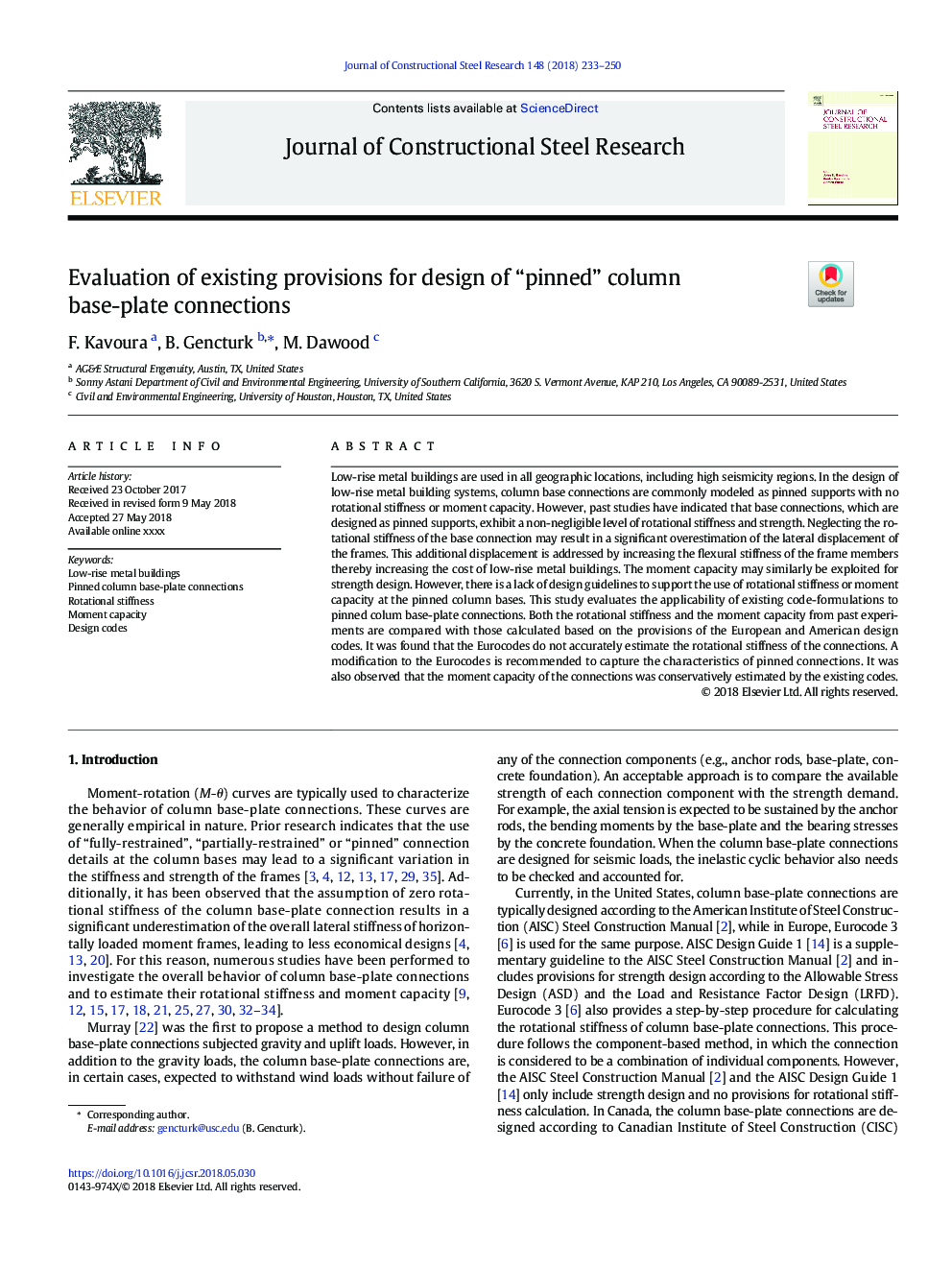| Article ID | Journal | Published Year | Pages | File Type |
|---|---|---|---|---|
| 6750398 | Journal of Constructional Steel Research | 2018 | 18 Pages |
Abstract
Low-rise metal buildings are used in all geographic locations, including high seismicity regions. In the design of low-rise metal building systems, column base connections are commonly modeled as pinned supports with no rotational stiffness or moment capacity. However, past studies have indicated that base connections, which are designed as pinned supports, exhibit a non-negligible level of rotational stiffness and strength. Neglecting the rotational stiffness of the base connection may result in a significant overestimation of the lateral displacement of the frames. This additional displacement is addressed by increasing the flexural stiffness of the frame members thereby increasing the cost of low-rise metal buildings. The moment capacity may similarly be exploited for strength design. However, there is a lack of design guidelines to support the use of rotational stiffness or moment capacity at the pinned column bases. This study evaluates the applicability of existing code-formulations to pinned colum base-plate connections. Both the rotational stiffness and the moment capacity from past experiments are compared with those calculated based on the provisions of the European and American design codes. It was found that the Eurocodes do not accurately estimate the rotational stiffness of the connections. A modification to the Eurocodes is recommended to capture the characteristics of pinned connections. It was also observed that the moment capacity of the connections was conservatively estimated by the existing codes.
Related Topics
Physical Sciences and Engineering
Engineering
Civil and Structural Engineering
Authors
F. Kavoura, B. Gencturk, M. Dawood,
